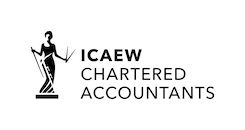The Second Budget 2015
George Osborne presented the first Budget of this Parliament on Wednesday 8 July 2015. The speech set out his plans for the next five years ‘to keep moving us from a low wage, high tax, high welfare economy; to the higher wage, lower welfare country we intend to create’.
Main Budget tax proposals
-
New taxation system for dividend receipts for individuals.
-
Proposals to restrict interest relief for ‘buy to let’ landlords.
-
Extension to the inheritance tax nil rate band available.
Other tax changes
-
An announcement of the amount of the Annual Investment Allowance available to businesses from January 2016.
-
Removal of the tax relief available on the acquisition of goodwill and customer related intangibles.
-
An increase in the amount of the NIC Employment Allowance.
The government also announced a number of changes to tax credits and Universal Credit as part of the welfare reforms aimed at reducing the growing expenditure in this area.
Our summary focuses on the tax issues likely to affect you, your family and your business. To help you decipher what was announced we have included our own comments.
If you have any questions please do not hesitate to contact us for advice.
Personal Tax
The personal allowance for 2015/16
For those born after 5 April 1938 the personal allowance is £10,600. For those born before 6 April 1938 the personal allowance remains at £10,660. The reduction in the personal allowance for those with ‘adjusted net income’ over £100,000 is £1 for every £2 of income above £100,000. So for 2015/16 there is no personal allowance where adjusted net income exceeds £121,200.
Commitments to increase the personal allowance
The Chancellor announced that the personal allowance will be increased to £11,000 for 2016/17 and to £11,200 in 2017/18. These allowances are higher than those previously announced in the March Budget.
Legislation to ensure a tax-free minimum wage
The government has an objective to raise the personal allowance to £12,500 and the higher rate threshold to £50,000 by the end of this Parliament.
The government has announced that the personal allowance will automatically increase in line with the equivalent of 30 hours a week at the adult rate of the national minimum wage once the personal allowance reaches £12,500.
Tax bands and rates for 2015/16
The basic rate of tax is currently 20%. The band of income taxable at this rate is £31,785 so that the threshold at which the 40% band applies is £42,385 for those who are entitled to the full basic personal allowance.
The additional rate of tax of 45% is payable on taxable income above £150,000.
Currently dividend income is taxed at 10% where it falls within the basic rate band and 32.5% where liable at the higher rate of tax. Where income exceeds £150,000, dividends are taxed at 37.5%. Dividend income is deemed to be paid net of a notional 10% tax credit.
Some individuals qualify for the 0% starting rate of tax on savings income up to £5,000. The rate is not available if taxable non-savings income (broadly earnings, pensions, trading profits and property income) exceeds the starting rate limit.
Commitment to increase the 40% income tax threshold
The Chancellor announced that the basic rate limit will be increased to £32,000 for 2016/17 and to £32,400 for 2017/18.
The higher rate threshold will rise to £43,000 in 2016/17 and £43,600 in 2017/18 for those
Personal Savings Allowance
The Chancellor announced in the March Budget that legislation will be introduced in a future Finance Bill to apply a Personal Savings Allowance to income such as bank and building society interest from 6 April 2016.
The Personal Savings Allowance will apply for up to £1,000 of a basic rate taxpayer’s savings income, and up to £500 of a higher rate taxpayer’s savings income each year. The Personal Savings Allowance will not be available for additional rate taxpayers.
Dividend Tax Allowance and rates of tax
The government will abolish the dividend tax credit from 6 April 2016 and introduce a new Dividend Tax Allowance of £5,000 a year.
The new rates of tax on dividend income above the allowance will be 7.5% for basic rate taxpayers, 32.5% for higher rate taxpayers and 38.1% for additional rate taxpayers. While these rates remain below the main rates of income tax, those who receive significant dividend income, for example as a result of receiving dividends through a close company, will pay more.
Comment
The government expects these changes to reduce the incentive to incorporate and remunerate through dividends rather than through wages to reduce tax liabilities.
The government also gives an example of a person who receives significant dividend income ‘due to very large shareholdings (typically more than £140,000)’ having to pay a higher rate of tax. It is unclear what this means.
Individual Savings Accounts (ISAs)
In 2015/16 the overall ISA savings limit is £15,240.
From 6 April 2016 the government will introduce the Innovative Finance ISA, for loans arranged via a peer to peer (P2P) platform. A public consultation has been launched on whether to extend the list of ISA eligible investments to include debt securities and equity offered via a crowd funding platform.
It was announced in the March Budget that regulations would be introduced in autumn 2015, following consultation on technical detail, to enable ISA savers to withdraw and replace money from their cash ISA without it counting towards their annual ISA subscription limit for that year. This change will have effect from 6 April 2016.
Help to Buy ISA
The government announced the introduction of a new type of ISA in the March Budget, the point they use their savings to purchase their first home. For every £200 a first time buyer saves, the government will provide a £50 bonus up to a maximum bonus of £3,000 on £12,000 of savings.
The government has now announced that Help to Buy ISAs will be available for first time buyers to start saving into from 1 December 2015. First time buyers will be able to open their Help to Buy ISA accounts with an additional one off deposit of £1,000.
Tax-Free Childcare scheme
The Tax-Free Childcare scheme will provide relief for 20% of the costs of childcare. The maximum relief will be £2,000 per child per year or £4,000 for disabled children. The scheme was scheduled to be launched in autumn 2015 but the launch date has been deferred to early 2017.
The current system of employer supported childcare will continue to be available for current members if they wish to remain in it or they can switch to the new scheme. Employer supported childcare will continue to be open to new joiners until the new scheme is available.
Employers’ workplace nurseries won’t be affected by the introduction of Tax-Free Childcare.
Comment
The scheme has been delayed due to a court case taken by some childcare voucher providers. The legal issues have now been resolved in favour of the government. So those people who are unable to use the current employer supported childcare scheme, such as the self-employed, will have to wait a bit longer to get support with childcare costs.
Free childcare
From September 2017 the free childcare entitlement will be doubled from 15 hours to 30 hours a week for working parents of 3 and 4 year olds. The government will implement this extension of free hours early in some local areas from September 2016. This free childcare is worth around £5,000 a year per child.
Restricting loan interest relief for ‘buy to let’ landlords
The government will restrict the amount of income tax relief landlords can get on residential property finance costs to the basic rate of income tax. Finance costs include mortgage interest, interest on loans to buy furnishings and fees incurred when taking out or repaying
mortgages or loans. No relief is available for capital repayments of a mortgage or loan.
Landlords will no longer be able to deduct all of their finance costs from their property income. They will instead receive a basic rate reduction from their income tax liability for their finance costs. To give landlords time to adjust, the government will introduce this change gradually from April 2017, over four years.
The restriction in the relief will be phased in as follows:
-
in 2017/18, the deduction from property income will be restricted to 75% of finance costs, with the remaining 25% being available as a basic rate tax reduction
-
in 2018/19, 50% finance costs deduction and 50% given as a basic rate tax reduction
-
in 2019/20, 25% finance costs deduction and 75% given as a basic rate tax reduction
-
from 2020/21, all financing costs incurred by a landlord will be given as a basic rate tax reduction.
This restriction will not apply to landlords of furnished holiday lettings.
Comment
The restrictions on loan interest will be an unwelcome development for landlords paying higher or additional rate of tax. For many investors, the restriction on loan interest relief will materially alter their attitude to the amount of debt taken on.
Other changes to property taxation
From April 2016 the government will:
-
replace the Wear and Tear Allowance with a new relief that allows all residential landlords to deduct the actual costs of replacing furnishings. Capital allowances will continue to apply for landlords of furnished holiday lets.
-
increase the level of Rent-a-Room relief from £4,250 to £7,500 per annum.
Pensions – restriction on tax relief
The Annual Allowance provides an annual limit on tax relieved pension savings. It is currently £40,000. From April 2016 the government will introduce a taper to the Annual Allowance for those with adjusted annual incomes, including their own and employer’s pension contributions, over £150,000. For every £2 of adjusted income over £150,000, an individual’s Annual Allowance will be reduced by £1, down to a minimum of £10,000.
The government also wants to make sure that the right incentives are in place to encourage saving into pensions in the longer term. The government is therefore consulting on whether there is a case for reforming pensions tax relief.
Business Tax
Where a business has a chargeable period which spans 1 January 2016 there are transitional rules for calculating the maximum AIA for that period. The maximum amount for the transitional period is the total of the time apportioned maximum AIA of £500,000 from the start of the chargeable period to 31 December 2015 plus the time apportioned maximum AIA of £200,000 from 1 January 2016 to the end of the chargeable period. However any AIA available on expenditure in the second period would be limited to the time apportioned maximum in that period.
Corporation tax relief for business goodwill
Where a company acquires goodwill or intangible assets, which are recognised in the accounts, a corporation tax deduction is available for the charge to profit and loss when the assets are written off. This deduction is only available on the acquisition of a business and not on the acquisition of shares in a company.
For acquisitions of goodwill and customer related intangibles made on or after 8 July 2015 this relief will no longer be available. In addition, there will be restrictions on the treatment of any allowable losses realised on subsequent disposals of goodwill or customer related intangibles which were acquired on or after 8 July 2015. There are no restrictions where a profit is made on a subsequent disposal.
Corporation tax payment dates
The government will introduce earlier dates for the payment of corporation tax for larger companies and groups, for accounting periods starting on or after 1 April 2017. For companies with annual taxable profits of £20 million or more, tax will be payable in quarterly instalments in the third, sixth, ninth and twelfth months of their accounting period. For groups the threshold is divided by the number of companies in the group.
Tax-advantaged venture capital schemes
This Budget also announces that the government will make amendments to the tax-advantaged venture capital schemes to ensure that the UK continues to offer significant and well-targeted support for investment into small and growing companies, with a particular focus on innovative companies.
Capital Taxes
Capital gains tax (CGT) rates and annual exemption
No changes have been announced in respect of CGT rates or the annual exemption.
Inheritance tax (IHT) nil rate band
The IHT nil rate band is currently frozen at £325,000 until April 2018. This is to remain frozen until April 2021.
IHT and the main residence nil rate band
An additional nil rate band is to be introduced where a residence is passed on death to direct descendants such as a child or a grandchild. This will initially be £100,000 in 2017/18, rising to £125,000 in 2018/19, £150,000 in 2019/20, and £175,000 in 2020/21. It will then increase in line with CPI from 2021/22 onwards. The additional band can only be used in respect of one residential property which has, at some point, been a residence of the deceased.
Any unused nil rate band may be transferred to a surviving spouse or civil partner. It will also be available when a person downsizes or ceases to own a home on or after 8 July 2015 and assets of an equivalent value, up to the value of the additional nil rate band, are passed on death to direct descendants. This element will be the subject of a technical consultation and will be legislated for in Finance Bill 2016.
There will also be a tapered withdrawal of the additional nil rate band for estates with a net value (after deducting any liabilities but before reliefs and exemptions) of more than £2 million. This will be at a withdrawal rate of £1 for every £2 over this threshold.
The Current tax positions of the non UK domicile
A UK resident and domiciled individual is taxed on worldwide income and gains. Non UK domiciles who are UK resident are currently able to claim the remittance basis of taxation in respect of foreign income and gains. This means that they are only taxed if foreign income and gains are brought into the UK. The non UK domicile is also favourably treated for IHT as they only pay IHT in respect of UK assets as opposed to their worldwide assets.
New proposals for non UK domiciles
The government intends to abolish non UK domicile status for certain long term residents from April 2017. This will only apply where an individual has been resident for at least 15 out of the last 20 tax years. Such individuals will be treated as deemed UK domicile for all tax purposes.
In addition, those who had a domicile in the UK at the date of their birth will revert to having a UK domicile for tax purposes whenever they are resident in the UK, even if under general law they have acquired a domicile in another country.
UK residential property held indirectly by non UK domicile persons
The government will legislate to ensure that, from April 2017, IHT is payable on all UK residential property owned by non UK domiciles, regardless of their residence status for tax purposes, including property held indirectly through an offshore structure such as a trust or partnership.
Other Matters
Tax lock
The government will legislate to set a ceiling for the main rates of income tax, the standard and reduced rates of VAT, and employer and employee Class 1 NIC rates, ensuring that they cannot rise above their current levels. The tax lock will also ensure that the NIC Upper Earnings Limit cannot rise above the income tax higher rate threshold and will prevent the relevant statutory provisions being used to remove any items from the zero rate of VAT and reduced rate of VAT for the duration of this Parliament.
National Living Wage
The government will introduce a new National Living Wage (NLW) for workers aged 25 and above, by introducing a premium on top of the National Minimum Wage (NMW). From April 2016, the NLW will be set at £7.20 an hour. This rate is 70p higher than the current NMW rate, and 50p above the NMW increase coming into effect in October 2015.
Employment allowance
From April 2016, the government will increase the NIC Employment Allowance from £2,000 National Living Wage (NLW) without paying any NIC.
To ensure that the NIC Employment Allowance is focussed on businesses and charities that support employment, from April 2016, companies where the director is the sole employee will no longer be able to claim the Employment Allowance.
Tax avoidance
A raft of HMRC compliance initiatives are to be launched over the next few years. To quote the Chancellor:
‘We’re boosting HMRC’s capacity with three quarters of a billion pounds of investment to go after tax fraud, offshore trusts and the businesses of the hidden economy, tripling the number of wealthy evaders they pursue for prosecution – raising £7.2 billion in extra tax.’
Tax credits
A number of changes to tax credits and Universal Credit are announced as part of the welfare reforms aimed at reducing the growing expenditure in this area.
Key changes include:
-
From April 2016 the government will reduce the level of earnings at which a household’s tax credits and Universal Credit award starts to be withdrawn for every extra pound earned. There will also be an increase in the taper rate which applies to any excess income further reducing the tax credit award.
-
Limiting the Child Element of both tax credits and Universal Credit to two children so that any subsequent children born after April 2017 will not be eligible for further support. Some claimants will be protected from these changes.
-
Those starting a family after April 2017 will not be eligible for the Family Element in tax credits and equivalent in Universal Credit.
In addition tax credit allowances (with the exception of disability elements) will be frozen.
July 2015





